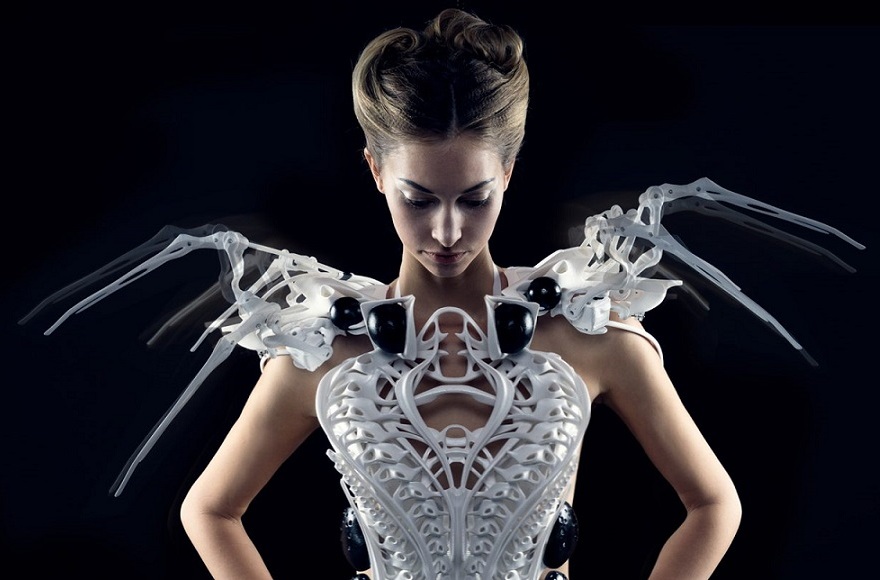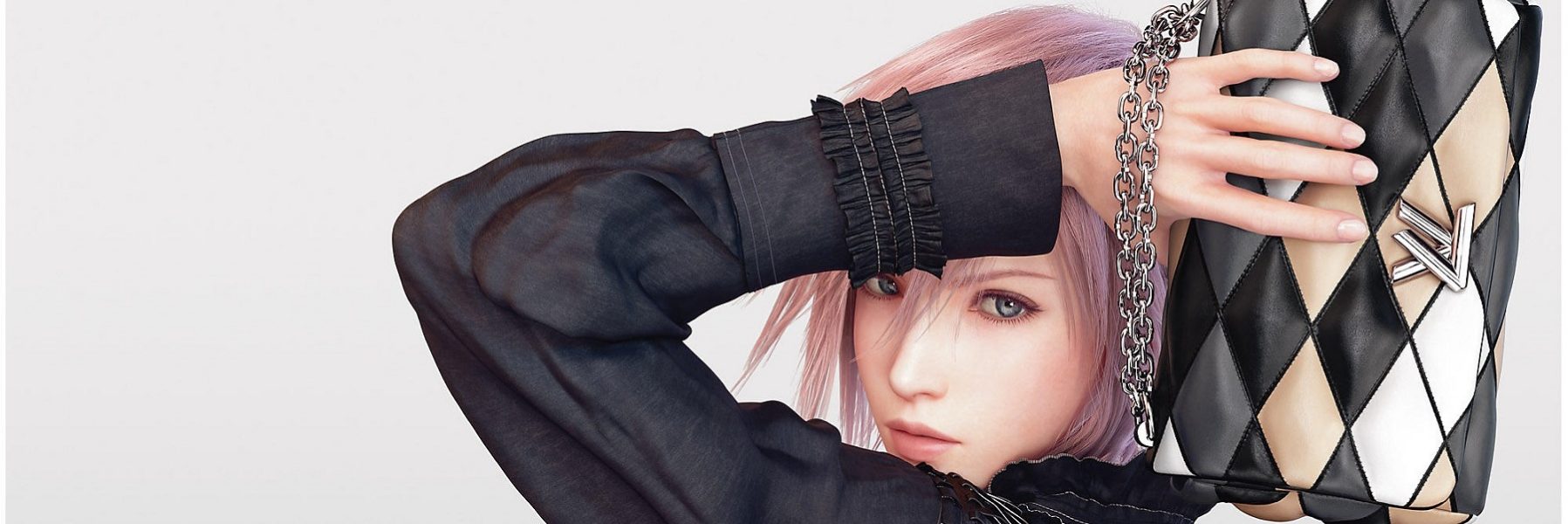This article is part of a collaboration with iQ by Intel.
Fashion designed for the 3D world of PC games is sparking couture style trends, opening new possibilities for cross-industry collaboration. Hoodies and t-shirts from alternative clothing store Hot Topic, with silkscreen depictions of popular and indie PC games, were once the fashionable dress code for anyone steeped in gaming culture. That began to change when high-style brands began connecting with game developers.
Every year at New York Fashion Week (NYFW), it’s increasingly evident how technology is digitizing the fashion world with innovations spanning electrified dresses to virtual reality (VR) runway experiences. Beneath the fashion-tech trend is growing number of interconnections between leaders in the fashion and gaming industries. “The gaming fashion subculture has totally evolved over the years,” said Amanda Erickson, who started the Closet to Console blog in 2011. “When games first started merchandising, it was just a slew of black one-size-fits-all gaming t-shirts.” At the time, she didn’t know how many people shared her interest in combining fashion and games. A few years and several thousands of followers later, Erickson now lives in a world where brands like Louis Vuitton team up with Final Fantasy developer Square Enix. Teddy Diefenbach, the creator of Hyper Light Drifter, believes the shift toward bring game design to high fashion is opening new opportunities. “Collaboration between these two fields of expertise can only lead to new ideas, not to mention great products that would benefit both fashion and gaming,” he wrote in an op-ed on gaming site Polygon.”
This past May, celebrities strutted down the red carpet at New York’s Metropolitan Museum of Art during one of the biggest nights in fashion. It was clear that science fiction was meeting reality at the Met Gala when Kim Kardashian arrived in a daring, chrome-emblazoned Balmain gown, looking like a ruler of a futuristic galaxy. The “Manus x Machina: Fashion in the Age of Technology” theme took many shapes, but former One Direction singer Zayn Malik caught the attention of gamers in particular. Sporting an impeccable black Versace suit complete with bionic arms that he designed, Malik confirmed that the classic Mortal Kombat character Jax sparked the design.
He explained to Dazed that by adorning the look of a virtual character, he also hoped to evoke yet another one of his major fashion influences. “A lot of starting references for me are technology and Prince,” Malik said, referring the fashionable music icon. “He was sort of bold and fearless in the way he decided to dress. He created another world with the clothes he wore, and it gave him an otherworldly feel.” Meanwhile, sweethearts Orlando Bloom and Katy Perry made a splash when they turned a gaming design into a real-life fashion accessory. Attached to the belt of Perry’s gown — which some suggested bore uncanny resemblance to the Nintendo character Bayonetta — was a Tamagotchi (1996), the Japanese pet simulator phenomenon from the ’90s.

The 2010 title Limbo, created by Danish game-maker Playdead, was one of the first big critical and financial hits to come out of the indie game movement. Its dark, stylized monochromatic aesthetic pushed the boundaries of game art and design. Years later, the game’s forbidding visuals and animations would influence designer Anouk Wipprecht to make the Spider Dress, which first hit tech industry shows and runways in 2015. Wipprecht’s Spider Dress was inspired by her fascination with Limbo’s notoriously harsh ways of killing the player. Particularly, the scene where a giant arachnid monster “dismantled the player by pinching straight through their [character’s] body,” inspired the dress’ defensive spider legs. Using the Intel Edison compute module, Annouk designed the dress to detect when the wearer felt unsafe, causing its mechanical limbs to strike and protector the wearer’s personal space.
In another experimental fashion twist on digital games, Wipprecht also created a bio-sensing unicorn wearable headset that keeps a watchful eye on what peaks the interest of children with ADHD. It’s looks playful, like something out of a fantasy game, but this stylish accessory is packed with neurosensory technology and an Intel Edison compute module that tells a tiny embedded video camera when to record the wearer’s most memorable moments.
Just as games influence fashion designers, fashionistas now influence games. The mutual admiration is leading to some first-of-their-kind collaborations between the gaming and fashion worlds. The 2013 mobile hit Kim Kardashian Hollywood reached 45 million downloads, with her real-world fashion and high-end clothing serving as the game’s primary mechanic. “So much of this game — from the outfits to hairstyles to accessories — are all inspired by looks that I love and hand selected,” said Kardashian. By bringing expensive high-end fashion into a digital world, Kim Kardashian: Hollywood (and its spin-off Kendall & Kylie) makes couture accessible to everyone, no matter what they can afford. Partnering with the biggest names in fashion, the game also includes collaborations with Juicy Couture, Judith Leiber Couture and even the designer behind Kardashian’s Met Gala gown, Balmain Paris.
In the past, the face of Louis Vuitton came in the form of Naomi Campbell and Kate Moss’s striking cheekbones and sashays down runways. But for its 2016 Summer/Spring collection, the brand opted for a more battle-hardened (and digital) heroine: pink-haired Final Fantasy character, Lightning. A campaign video showed Lightning advancing down the runway, striking combat-ready poses, all while wielding a black Louis Vuitton clutch like she was casting a devastating Firaga spell.

Credit: Square Enix and Louis Vuitton
In a gaming-world-meets-fashion-industry interview with The Telegraph, the avatar Lightning described how the collaboration changed the way she saw fashion. “[I realized that] it displays the essence of who you are to the people around you,” she said. “I hope that one day, we can share the same stage, that different worlds can come together. But who knows? Maybe that’s ambitious, even for me.” Louis Vuitton creative director Ghesquière said he hoped the collaboration with developer Square Enix would raise interesting questions about the increasingly blurred line between the world of videogames and high fashion. “How can you create an image that goes beyond the classic principles of photography and design?” he asked in an interview published in The Telegraph. “Lightning heralds a new era of expression.”
Feature image credit: Square Enix and Louis Vuitton
